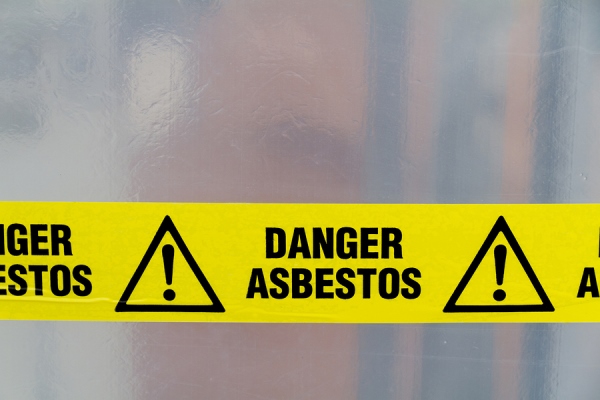Know the Risks of Asbestos

Some workplace hazards have an immediate effect, causing an injury or illness you can’t miss. Others, such as asbestos, take many years to do their damage.
Asbestos is a naturally-occurring mineral used for fireproofing and many other applications. It is mined from rock in the form of a fiber that can be spun or woven into fabric and other products. Its many qualities led to widespread use before the serious health effects were common knowledge. Asbestos doesn't burn. It’s flexible, strong, resistant to chemical damage, an insulator against heat and inexpensive.
Historians say asbestos was used first about 4,500 years ago in bricks and pottery. Its first application as a fire retardant was about 2,500 years ago. The first historical indication of asbestos-related lung disease was in the first century AD among slaves weaving the material into robes and burial garments.
By the late1800s asbestos was being used widely for roofing, pipe covering, insulation and textiles. After the Second World War, the amount of asbestos used and the diversity of products took a jump. Although asbestos has since been banned for many uses, it remains present in older construction, fireproofing and insulation products. It causes no harm as long as it is contained, but if it is disturbed or disintegrating, asbestos can cause chronic and fatal lung disease.
That’s why you need to know something about asbestos, particularly if you work in construction, maintenance or demolition. Off-the-job renovation of houses, antiques or vehicles can also put you at risk.
Asbestos usually is mixed with other materials. For example, some floor tiles contain a small amount of asbestos. The mineral can be found in sprayed fireproofing, sprayed insulation, fire doors, pipe and boiler wrap, building insulation in walls and ceilings, cementing compounds used in plumbing, older shingles and siding, brake linings and clutch pedals.
When asbestos or asbestos-containing products break apart, they release tiny fibers that can be breathed in. These fibers lodge in the lung where they set off serious illness.
Asbestosis is a chronic respiratory condition. The inhaled fibers irritate the lung tissues and cause scarring. Symptoms include shortness of breath and a crackling sound in the lungs when inhaling. The disease is disabling and usually fatal. Workers who have renovated or demolished buildings containing asbestos may be at risk.
Lung cancer is the cause of most deaths from asbestos exposure. Mining, milling, manufacturing and use of asbestos and asbestos products puts the worker at risk. Symptoms include a cough, change in breathing and shortness of breath. Smoking in combination with asbestos exposure increases risk of lung cancer.
Mesothelioma is a rare form of cancer, usually occurring in the thin membrane lining of the lungs, chest or abdomen. It is almost always linked to asbestos exposure. At risk are miners and textile workers.
Operations such as the following release asbestos fibers from asbestos-containing materials:
- drilling
- grinding
- buffing
- cutting
- sawing
- striking
To protect yourself from exposure, you need to know where asbestos is likely to be found in the facility. Head warning signs and markings. If in doubt, ask your supervisor or EHS professional before attempting to replace a fallen ceiling tile or crumbled insulation. If something is identified as asbestos in the facility and you see some damage to it, report it immediately.
